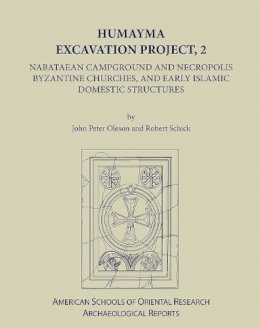
Humayma Excavation Project, 2: Nabatean Campground and Necropolis, Byzantine Churches, and Early Islamic Domestic Structures
John Peter Oleson
Includes 384 illustrations, some in colour.
In 1986 and 1987 Oleson and a small team surveyed an area of 250 sq km around the site of al-Humayma (ancient Hawara) in Jordan’s southern desert. Hawara was founded sometime in the first century BC by the Nabataean king Aretas. The flourishing settlement was occupied by a unit of Roman soldiers after AD 107, and it became the largest settlement in the Hisma desert during the Byzantine period. The Abbasid family built a manor house and mosque at Humayma in the late seventh century.
This is the second volume of a projected four volume series about the research on this important site. This volume reports on a Nabataean campground, which provides unique testimony to the flexible character of Nabataean settlement design, and provides detailed information on the Nabataean necropolis, which shows parallels with those at both Petra and Hegra. The volume also includes the excavation records and analysis of five Byzantine churches, two of which lay above Nabataean structures, and three of which were modified for re-occupation in the Early Islamic period. There are also short reports on the probing of an Early Islamic structure of undetermined character, and on an important hoard of coins and jewellery found in the countryside. A number of subsidiary studies concern the human remains, botanical and faunal remains, fish bones, and molluscs found at the site in the course of the 11 seasons of excavation. The ceramics and small finds associated with the structures are analyzed, along with the many marble chancel screen fragments.
The main audience will be archaeologists of the Near and Middle East. The presentation highlights issues such as the projection of culture from Petra outward to peripheral settlements, transitions between nomadic pastoralist and sedentary agricultural ways of life in Arabia Petraea, design eccentricities in rural church architecture, the spread and practice of Christianity in this region, and rural architecture of the Early Islamic period. There is also discussion of the physical evidence for local desert agriculture, stock raising, hunting, the import and export of foodstuffs, and the state of human nutrition at ancient Humayma.
Product Details
About John Peter Oleson
Reviews for Humayma Excavation Project, 2: Nabatean Campground and Necropolis, Byzantine Churches, and Early Islamic Domestic Structures
